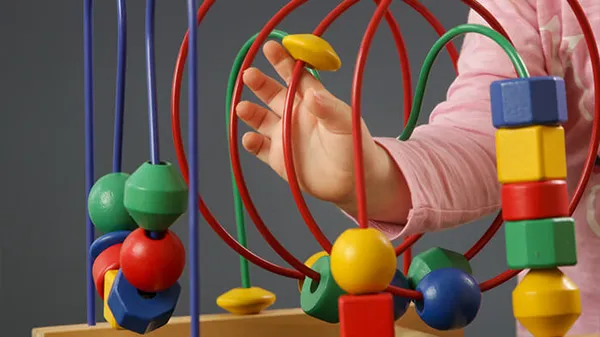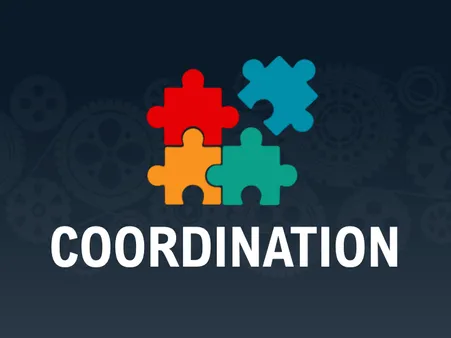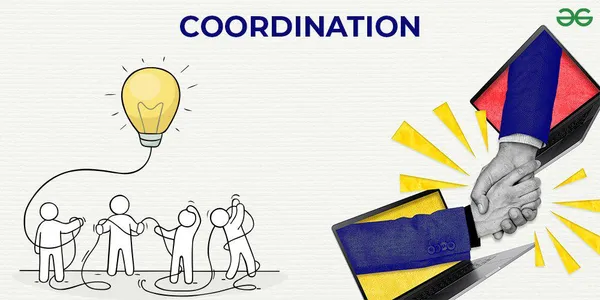Table of Contents
Coordination, the harmonious synchronization of actions and efforts, lies at the heart of success. It weaves together individual strengths, aligns team efforts, and propels organizations toward achieving remarkable outcomes. At Kizworld, we recognize the profound impact of** coordination**, believing it to be the cornerstone of personal growth and organizational excellence.
The Art of Seamless Coordination: Unifying Efforts & Maximizing Results
I. Types of Coordination
Types of Coordination
Within these two main categories of coordination, several variations exist, each having its own characteristics and applications.
- Intra-limb coordination: This form involves different muscles working together within a single limb. It is essential for complex movements requiring the coordinated use of multiple muscles, such as grasping objects or maintaining balance.
- Inter-limb coordination: Inter-limb coordination refers to the coordination of movements between different limbs on the same side of the body. It is necessary for activities such as walking, swimming, and playing sports.
- Inter-segmental coordination: This form of coordination involves the coordinated movement of different segments of the body, such as the trunk, limbs, and head. It is crucial for maintaining posture, balance, and overall body movements.
- Motor planning: It involves the ability to plan and execute intricate movements, including anticipating the necessary steps, sequencing them appropriately, and making adjustments as needed.
- Motor learning: Coordination also encompasses the capacity to learn new motor skills, including the development of new movement patterns and the refinement of existing ones.
- Coordination and cognition: Cognitive processes, such as attention, perception, and decision-making, play a significant role in coordination. These cognitive aspects allow individuals to adapt their movements to changing circumstances and perform complex tasks efficiently.
By understanding these different aspects of coordination, individuals can better appreciate the complexity of the human body's ability to generate smooth, efficient, and purposive movements.
Activity | Type of Coordination |
Walking | Inter-limb coordination |
Throwing a ball | Intra-limb coordination |
Riding a bike | Inter-segmental coordination |
Playing a musical instrument | Motor planning and learning |
Dancing | Combination of different types of coordination |
Effective coordination is essential not only for physical activities but also for various aspects of daily life, fostering independence and promoting overall well-being.Coordination in various physical activities and sports is a testament to its significance in achieving optimal performance, whether it's in gymnastics, martial arts, or skateboarding.
II. Coordination in Action
Coordination in Action
Coordination can be seen in action in many different areas of life., in fields as vast as sports, dance, and music and as specific as a child's first steps or a surgeon's precise hand movements during surgery.
In gymnastics, for example, gymnasts must coordinate their movements to perform complex routines on various apparatus. They must have strong coordination to maintain balance, control their body position, and execute difficult skills safely and gracefully.
In martial arts, coordination is essential for both offense and defense. Martial artists must be able to coordinate their hands and feet to strike and block accurately and effectively. They also need to coordinate their movements to maintain balance and avoid being knocked down.
In surfing, surfers must coordinate their movements to paddle, stand up, and ride waves. They need to be able to coordinate their arms and legs to generate power and maintain balance on the surfboard. They also need to coordinate their movements with the waves to catch and ride them successfully.
In calisthenics, athletes use their own bodyweight to build muscle and strength. Calisthenics exercises require coordination to control the body and perform movements smoothly and efficiently. Athletes need to coordinate their muscles to work together and maintain proper form throughout each exercise.
In parkour, practitioners use their bodies to navigate obstacles in an urban environment. Parkour requires coordination to move quickly and efficiently, as well as to maintain balance and control. Practitioners need to coordinate their movements to climb, jump, and vault over obstacles, and to land safely.
In snowboarding, riders use a snowboard to slide down snow-covered slopes. They control the direction and speed of the snowboard by coordinating their movements to lean and shift their weight. Snowboarders also need to coordinate their movements to perform tricks and jumps.
- Strong coordination is essential for playing sports effectively.
- Coordination is also important in everyday life.
- People with good coordination are more likely to be successful in many different areas.
III. Improving Coordination
Improving Coordination
Coordination is a vital skill that affects a vast range of activities, from daily tasks to athletic endeavors. To improve coordination, consider practicing drills and exercises that challenge multiple muscle groups and require fine motor control. Engage in activities such as juggling, playing musical instruments, or dancing, which demand coordination and timing. Moreover, practicing yoga or martial arts can enhance coordination through postures and movements that promote balance and flexibility. Sports like soccer, basketball, and tennis, which require quick reactions and precise movements, also aid coordination development. Regularly including these activities in your routine can help refine and enhance coordination skills.
Coordination is a key component of many physical activities and can be improved through consistent practice and participation in various activities. By challenging ourselves with new and diverse movements, we can enhance our coordination and overall performance.
Practice drills and exercises that target multiple muscle groups and require fine motor control. |
Engage in activities like juggling, playing musical instruments, or dancing, which require coordination and timing. |
Participate in yoga or martial arts classes, as they promote balance, flexibility, and coordination. |
Play sports like soccer, basketball, and tennis, which demand quick reactions and precise movements. |
Embracing these activities not only enhances our physical abilities but also supports our cognitive function and overall health.
Here are some additional tips for improving coordination:
- Focus on developing body awareness and proprioception, or the ability to sense your body's position in space.
- Practice mindful movement and pay attention to your body's movements and sensations.
- Challenge yourself with activities that require split-second reactions and hand-eye coordination, such as playing video games or practicing martial arts.
- Engage in regular physical activity and exercise, as this can improve your overall coordination and balance.
Remember, improving coordination is a gradual process that requires persistence and dedication. By consistently engaging in activities that challenge your coordination and incorporating these tips into your routine, you can enhance your overall coordination and reap its numerous benefits.
IV. Benefits of Coordination
Benefits of Coordination
Coordination is a crucial skill that offers numerous benefits in various aspects of life. It enhances our ability to perform tasks efficiently, promotes safety, and fosters collaboration and teamwork. Here are some key benefits of coordination:
- Improved Performance: Coordination enables us to execute tasks with greater precision, accuracy, and speed. This is particularly important in sports, music, dance, and other activities that require fine motor skills and timing.
- Enhanced Safety: Good coordination helps us avoid accidents and injuries by allowing us to respond quickly and appropriately to unexpected situations. It is essential for activities such as driving, operating machinery, and navigating through crowded spaces.
- Effective Teamwork: Coordination is vital for successful teamwork. It enables individuals to work together seamlessly, synchronize their actions, and adapt to changing circumstances. This is crucial in team sports, military operations, and various workplace settings.
- Improved Communication: Coordination facilitates effective communication by enabling us to convey our thoughts and ideas clearly and accurately. It helps us to listen actively, understand others' perspectives, and respond appropriately.
- Increased Productivity: Coordination enhances productivity by allowing us to complete tasks more efficiently and effectively. It reduces wasted time and effort, leading to greater output and improved overall performance.
Area | Benefits |
Sports | Improved performance, reduced injuries |
Music and Dance | Enhanced precision and timing |
Safety | Reduced accidents and injuries |
Teamwork | Effective collaboration and adaptation |
Communication | Clear and accurate expression of ideas |
Productivity | Increased efficiency and output |
In summary, coordination is a valuable skill that contributes to our overall success and well-being. By developing and maintaining good coordination, we can perform tasks more effectively, enhance our safety, work better as a team, communicate more clearly, and increase our productivity.
To further explore the significance of coordination, let's delve into the different forms of coordination and their impact on various activities.